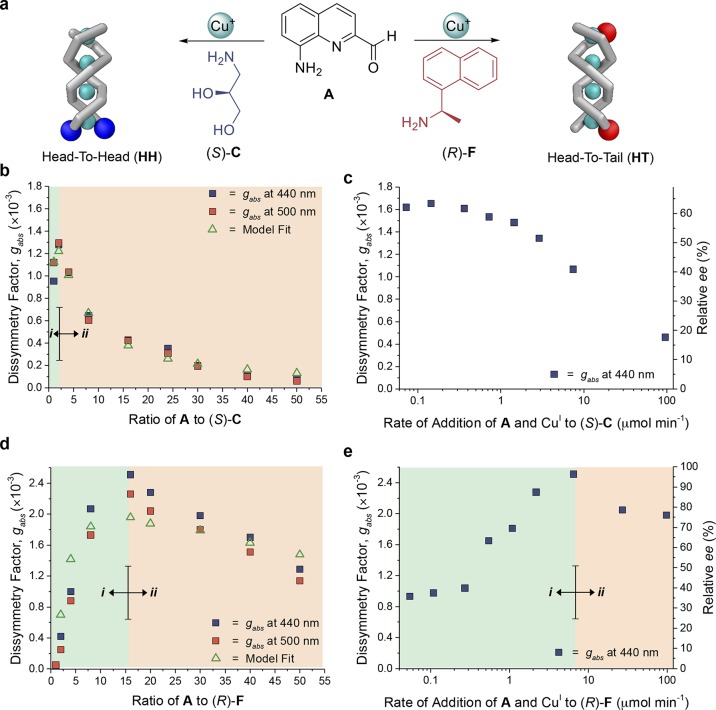Figure 7.
(a) Chiral amine C afforded an excess of the HH regioisomer, whereas bulkier chiral amine F led predominantly to the HT regioisomer. The HH regioisomer possesses a free terminus capable of elongation, whereas HT has both termini capped, hindering further elongation. The degree of stereochemical induction was in all cases gauged using the dissymmetry factor gabs, which is proportional to ee, with a gabs of 2.54 × 10–3 corresponding to 100% ee (Supporting Information Section 7.2). (b) Plot of gabs against the monomer-to-chiral-inducer ratio (proportional to polymer length, Figure S24) for the HH system where all precursors were combined simultaneously. A decrease in induction was observed at an A/C ratio above 2. (c) gabs plotted against the rate of addition of A (18 equiv) and CuI (9 equiv) to (S)-C (1 equiv); slower rates of addition favored a greater degree of induction. (d) Plot of gabs against the ratio of monomer A to bulky chiral inducer (R)-F where all precursors were combined simultaneously. Two regimes were observed: (i) where an increase in the A/F ratio favored a greater degree of chiral induction and (ii) where a further increase in the A/F ratio reduced the degree of chiral induction, as a greater proportion of polymer chains initiate from achiral A as opposed to chiral F. (e) Plot of gabs (440 nm) against the rate of addition of A (18 equiv) and CuI (9 equiv) to F (1 equiv), affording an HT polymer, again showing two regimes: (i) where an increase in rate of addition disfavored termination through chain-capping by free F, affording an increase in induction; (ii) more rapid addition reduced enantioenrichment because proportionally fewer polymer chains nucleated from chiral F residues and more initiation took place via the racemic standard polymerization pathway (Figure 1).

